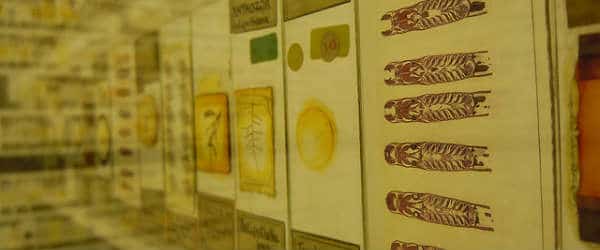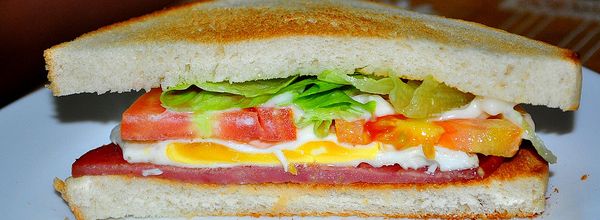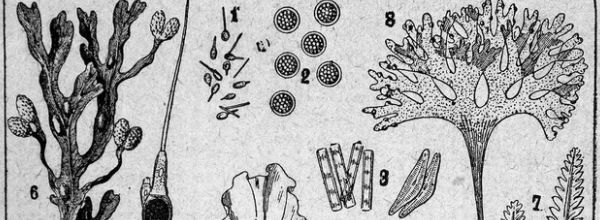Many cell lines commonly used in research are adherent, meaning they attach and grow on a surface rather than just hanging out in suspension.
If you want to perform imaging of adherent cells, such as to undertake cancer cell microscopy, you need to fix them to your microscope slides. Luckily for you, this is fairly easy to do, thanks to the fact that adherent cells are, well, adherent, and like to grow on plastic or glass—the same stuff your microscope slides and covers are made of.
Below is a step-by-step guide to fix adherent cells to your microscope coverslips for excellent imaging results.
Everything You Need to Fix Adherent Cells
Before you get started, ensure you have everything you need to fix adherent cells. These are outlined in the table below:
Table 1. Reagents and Equipment you will need.
Reagents | Equipment |
Adherent cell line | Pipettes and tips |
Growth media | Freezer |
Methanol or paraformaldehyde | Cell incubator |
Ethanol | Cell culture hood |
Sodium hydroxide | Large beakers |
Phosphate-buffered saline (PBS) | 24-well plates |
Poly-lysine or gelatin |
Top Tip: Use Sterile Technique
It should go without saying, but I have to say it anyway, as it is so important. Whenever you are doing cell culture, you must use sterile techniques. This means that everything that goes into the cell culture hood must be sterilized, and once in the hood, you must use good sterile/aseptic technique to prevent cross-contamination.
In short, spray everything with ethanol, only open flasks in the hood, wear gloves, and be careful not to let your pipette tips touch anything.
1. Clean Your Coverslips (Optional)
Your coverslips should be fairly clean out of the box, but they may have some dust on them. This dust can interfere with your ability to coat your slides evenly and thus impair your cells from sticking to your coverslips evenly. Therefore, you may choose to wash your uncoated coverslips.
Note: Do not wash pre-coated coverslips.
Washing Protocol
To wash your coverslips, use a cleaning solution of 57% ethanol and 10% sodium hydroxide. Be careful and remember your PPE. Once made, place your coverslips in a beaker and place this beaker in another container.
This secondary container is to prevent the basic solution from accidentally splashing onto your bench top or onto other equipment.
Pour your cleaning solution over your slides and shake (gently!) for 2 hours at room temperature. Then rinse your slides well with distilled water. When done, keep your coverslips clean by keeping them covered as much as possible and only handling them on the edges with gloved hands, or with forceps.
2. Sterilize Your Coverslips
Regardless of whether you choose to wash your coverslips or not, they need to be sterilized. To sterilize your coverslips before use, place them exposed in your cell culture hood with the UV light on for 20–30 minutes.
3. Coat Your Coverslips
Following sterilization, you need to coat the coverslips with either poly-lysine or gelatin. These coatings are necessary to help your cells stick to the glass surface. To coat, place your sterilized coverslips into the wells of a sterile 24-well cell culture plate—one coverslip per well. Then follow the directions below to coat with either poly-lysine or gelatin.
Poly-lysine Coating Protocol
Nearly all types of adherent cells will adhere to a poly-lysine coating, making it the most popular coating choice. To coat your slides with poly-lysine, add enough 1:10 poly-lysine solution* to cover the tops of each of your coverslips. Incubate your slides with this poly-lysine solution for 2 to 24 hours. Then aspirate off any remaining solution, rinse a few times with sterile PBS**, and let your slides air dry in the hood for 15 minutes.
It is important to know that the poly-lysine is bound to your coverslips only by electrostatic charge—it can be easily rubbed off. Therefore it is important to handle your slides carefully once they are coated. Coated slides are best used within 4 months after coating.
*You can make this 1:10 poly-lysine solution (0.1–1 mg/ml of poly-lysine in 0.15 M borate buffer, pH 8.3, filter sterilized). You can buy it premade. Or alternatively, you can purchase coverslips that are pre-coated with poly-lysine. It depends on what you have more: Time or money.
**PBS (phosphate-buffered saline) is a common buffer used in cell culture and histology. The osmolarity and ion concentration of PBS are the same as in human tissues, so it will not cause your cells to shrivel or explode. PBS is 137 mmol NaCl, 2.7 mmol KCl, 10 mmol Na2HPO4, and 2 mmol KH2PO4 at pH7.4. Sterile filter your PBS.
Gelatin-coating Protocol
Cover your coverslips with 0.1% gelatin in a deionized H2O solution. Let stand for 10 minutes. Then aspirate off and let your slides air dry in the hood for 15 minutes. Once dry, the coated coverslips can be stored for future use.
Other Coating Methods
Almost any sort of extracellular matrix protein can be used to coat your coverslips, including collagen, fibronectin, and laminin. However, few offer the universality of the poly-lysine or gelatin coatings.
For example, fibronectin only works with endothelial cells, fibroblasts, neurons, and CHO cells, but not leukocytes or myoblasts. In contrast, the gelatin or poly-lysine methods are compatible with most adherent cell types, leaving you one less thing to worry about.
4. Plate Your Cells
Place your sterile and coated coverslips into a new sterile 24-well culture plate. Split your adherent cell line as you normally would with growth media. Plate your cells at your normal confluency (~10%) onto the surface of your coverslips. It will take ~400 to 500 µl of media to cover your coverslip.
When done, replace the lid of your 24-well plate, and place your coverslips and cells back into your 37°C humidified cell incubator. Check your coverslips daily until your cells are ~70% confluence, usually in 2 to 3 days.
5. Aspirate Your Media
When your cells are 70% confluent (or more or less, depending on what you want to image). Use the culture hood vacuum to remove the old growth media, leaving your adherent cells stuck to your coverslips. Immediately after aspirating, proceed to the next step. Do not allow your cells to dry out.
6. Fix Your Cells
Next, you need to fix your cells. The goal of fixation is to halt decomposition and freeze cellular proteins and subcellular structures in place.
There are two common classes of fixation; organic solvent methods and the cross-linking method. The goal of both methods is to denature your proteins. Sadly, there is no way to anticipate the best fixation method for your staining or immunohistochemistry needs. Instead, you will likely need to test a variety of fixation conditions for your particular situation. See this article for more on troubleshooting fixation.
Organic Solvent Methods
In this method, organic solvents such as alcohol or acetone are used. These organic solvents work to preserve your samples by removing lipids, dehydrating your tissue, and denaturing and precipitating the proteins in your cells.
To fix with organic solvents, use ice-cold methanol, ethanol, or a 1:1 mix of ethanol and methanol to cover the cells on your coverslips. Once covered, incubate your cells in the freezer (-20°C) for 5 to 7 minutes. Do not worry about keeping your cells sterile at this point—you are killing them!
Cross-linking Method
In this method, paraformaldehyde is used to form covalent chemical bonds (or cross-links) between the proteins in your tissue and their surroundings. This method usually provides the best preservation, especially of soluble proteins, but it can also ‘mask’ your antigens.
If your antigens are ‘masked,’ this means that the cross-linking is preventing your antibody from recognizing your antigens. There are numerous methods to ‘unmask your antigens’ after cross-linking, using various combinations of proteinases, heat, and chelators. Read more about antigen unmasking here.
To fix by cross-linking, cover your cells with 2 to 4% paraformaldehyde solution (diluted in PBS). Incubate your cells in this solution for 10 to 20 minutes at room temperature. Note some cells can be damaged by the abrupt change between the culture media’s osmolarity and the fixation solution’s osmolarity. If this is your case, you may want to spike your growth media with ~500µl of 4% paraformaldehyde, wait 2 minutes, aspirate, then cover your cells with pure 2 to 4% paraformaldehyde for 10 to 20 minutes.
7. Rinse
Gently rinse your fixed cells with PBS to remove any fixation agent. Be careful (pipette gently!) when applying your PBS so you do not disrupt your fixed cells. When done, your coverslips with their fixed cells can be stored under PBS in the refrigerator for up to three months.
8. Proceed With Staining and Imaging
Your adherent cells are now fixed to your coverslip and ready for staining, mounting, and imaging when you are.
How To Fix Adherent Cells Summarized
To fix adherent cells for microscopy, first clean and sterilize coverslips, then coat them to enhance cell adhesion. Plate cells, allowing them to grow to the desired confluency before aspirating the media. Fix the cells using organic solvents or a cross-linking method to preserve their structures. Rinse gently with PBS to remove fixatives, preparing the cells for subsequent staining and imaging.
Good luck and happy imaging!
Originally published October, 2013. Reviewed and updated February, 2024.






